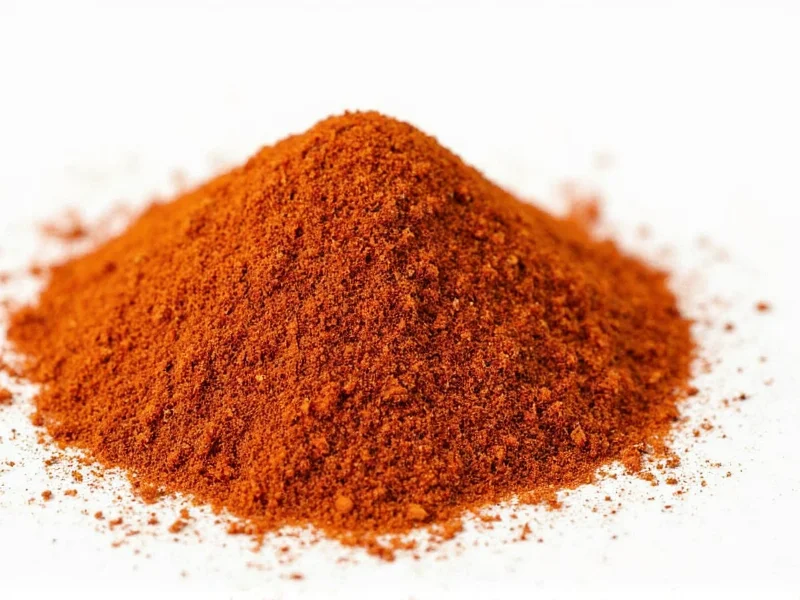Understanding exactly what goes into taco seasoning helps you control flavors, avoid unwanted additives, and customize blends to your taste preferences. Whether you're checking labels at the grocery store or creating your own mix from scratch, knowing the core components gives you culinary flexibility.
Core Ingredients in Traditional Taco Seasoning
Taco seasoning's distinctive flavor comes from a carefully balanced combination of spices that create that familiar Tex-Mex profile. While recipes vary, these seven ingredients form the foundation of most blends:
- Chili powder - The base ingredient providing mild heat and earthy flavor (not pure cayenne)
- Ground cumin - Adds warm, slightly smoky depth that defines Mexican-inspired dishes
- Garlic powder - Contributes savory umami notes without fresh garlic's moisture
- Onion powder - Provides sweet, aromatic foundation that complements meats
- Paprika - Adds color and subtle sweetness (smoked paprika creates a different profile)
- Dried oregano - Mexican oregano offers citrusy notes distinct from Mediterranean varieties
- Salt - Enhances all flavors and balances the blend
Commercial vs. Homemade Taco Seasoning Composition
Store-bought taco seasoning often contains additional ingredients beyond the basic spice blend. Understanding these differences helps you make informed choices based on your dietary needs and flavor preferences.
| Ingredient Type | Homemade Blend | Commercial Blend |
|---|---|---|
| Primary Spices | Chili powder, cumin, garlic powder, onion powder, paprika, oregano | Same core spices, often in different proportions |
| Thickening Agents | None (unless added intentionally) | Cornstarch, flour, or maltodextrin (30-50% of blend) |
| Sodium Content | Adjustable (typically 1 tsp salt per 2 tbsp blend) | High (often 300-500mg sodium per serving) |
| Anti-caking Agents | None | Silicon dioxide or calcium silicate |
| Flavor Enhancers | None | MSG, yeast extract, or autolyzed vegetable protein |
| Sugar Content | None unless added | Often 1-2g per serving |
Regional Variations in Taco Seasoning Formulas
What many Americans recognize as "taco seasoning" actually represents a North American interpretation of Mexican spice blends. Authentic Mexican cooking typically uses fresh ingredients rather than pre-mixed dry blends. The seasoning commonly found in U.S. grocery stores emerged from Tex-Mex cuisine and became standardized through commercial products.
Mexican home cooks would traditionally use:
- Freshly toasted and ground spices
- Fresh garlic and onions instead of powders
- Epazote or hoja santa instead of oregano
- Chiles de árbol or guajillo instead of generic chili powder
When exploring what spices are in taco seasoning across different regions, you'll notice:
- Southwestern U.S. versions emphasize cumin and chili powder
- California-style blends often include more garlic
- Midwestern commercial blends typically have higher salt and starch content
- Authentic Mexican preparations rarely use pre-mixed dry seasonings
Creating Your Perfect Homemade Taco Seasoning
Knowing how to make taco seasoning from scratch gives you complete control over ingredients and flavor balance. Here's a professional chef's approach to crafting superior blends:
Start with this base ratio for a versatile blend (yields approximately ¼ cup):
- 2 tablespoons chili powder (ancho preferred)
- 1 tablespoon ground cumin
- 2 teaspoons garlic powder
- 2 teaspoons onion powder
- 1½ teaspoons paprika (sweet, not smoked)
- 1 teaspoon dried Mexican oregano (or regular oregano)
- ¾ teaspoon black pepper
- 1 teaspoon sea salt (adjust to taste)
For specialized variations:
- Low-sodium version: Replace salt with 1 teaspoon nutritional yeast
- Smoky blend: Substitute 1 teaspoon chipotle powder for regular chili powder
- Sweet-spicy option: Add ¼ teaspoon cinnamon and a pinch of cloves
- Gluten-free taco seasoning ingredients: Ensure all components are certified GF (some commercial spices use wheat fillers)
Why Ingredient Quality Matters
The freshness and quality of your spices dramatically impact the final flavor. Ground spices lose potency within 6 months, so check expiration dates or perform a simple freshness test: rub a small amount between your fingers and smell - vibrant, strong aroma indicates freshness.
For the most authentic taco seasoning spice blend components, consider toasting whole spices before grinding:
- Dry-toast cumin seeds and coriander seeds in a skillet over medium heat until fragrant
- Add dried chiles (like guajillo or ancho) for 1-2 minutes until pliable
- Grind with other ingredients in a spice grinder
- Store in an airtight container away from light
This method creates a more complex flavor profile than standard store-bought versions, revealing why many chefs prefer making their own taco seasoning recipe without MSG.
Dietary Considerations for Taco Seasoning
When examining what is taco seasoning made of from a nutritional perspective, several factors deserve attention:
- Sodium content: Commercial blends often contain 20-30% of your daily sodium per serving
- Hidden sugars: Many brands add 1-2 grams of sugar per serving
- Gluten concerns: Some manufacturers use wheat flour as a thickener
- Anti-caking agents: Silicon dioxide is common but unnecessary in small-batch homemade versions
- MSG sensitivity: Present in many commercial blends as "yeast extract" or "hydrolyzed vegetable protein"
Creating your own blend addresses these concerns while allowing customization for specific dietary needs. A simple homemade taco seasoning ingredients list gives you complete transparency about what you're consuming.
Using Taco Seasoning Effectively
Understanding the composition helps you use taco seasoning more effectively. The starch content in commercial blends serves a purpose - it helps thicken meat mixtures. When using homemade versions without thickeners, consider these techniques:
- Add 1 teaspoon cornstarch to your meat mixture before adding seasoning
- Cook meat with seasoning longer to reduce liquid content
- Mix seasoning with a small amount of water or broth to create a paste before adding to meat
- For taco salads or bowls, use less seasoning since there's no need for thickening
The balance of spices works synergistically - cumin enhances meat flavors, chili powder provides color and mild heat, while garlic and onion powders create savory depth. This explains why simply adding individual spices without proper ratios rarely achieves that distinctive taco flavor profile.











 浙公网安备
33010002000092号
浙公网安备
33010002000092号 浙B2-20120091-4
浙B2-20120091-4